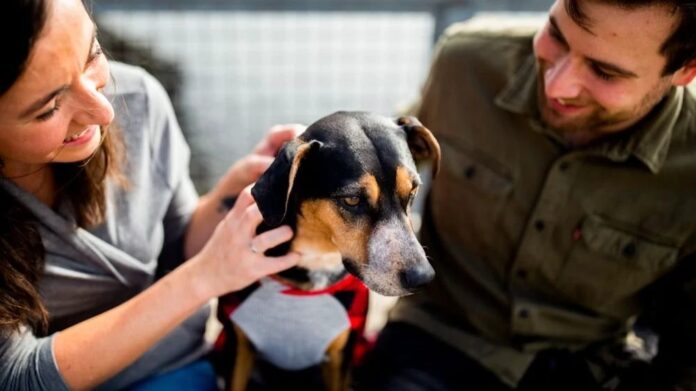Your dog follows you everywhere, always wagging its tail and seeking attention. As social creatures, dogs see their owners as part of their pack, desiring constant companionship.
However, when work calls, leaving your dog behind can lead to severe separation anxiety.
Separation anxiety occurs when a dog experiences extreme stress and fear when left alone. This condition can manifest through behaviors like whining, pacing, trembling, or more destructive actions such as chewing furniture and excessive barking. Dogs may even attempt to escape, potentially injuring themselves. Other signs include loss of appetite, drooling, and house-trained dogs urinating indoors. Causes can range from moving to a new home to past traumas like abandonment or abuse.
Gradual habituation
If your dog shows clingy behaviour and panics when left alone, gradually training them to be alone can help. Abruptly leaving can exacerbate their anxiety. Start by briefly leaving your dog in a room and returning before they become anxious. This reassures them of your return, easing their fear of abandonment, especially for dogs with a history of trauma. Gradually increase the time spent apart, beginning with fifteen minutes and extending it slowly.
Dissociate departure cues
Dogs are perceptive and recognize pre-departure behaviours, such as putting on shoes or packing a bag, which can trigger their anxiety. To mitigate this, perform these actions without actually leaving. Dress up or pack your bag, then stay home and engage in regular activities like watching TV. This helps desensitize your dog to these cues, reducing their anxiety.
Foster independence
It’s common to want to shower your dog with affection, but fostering independence is crucial for their well-being. Avoid over-the-top departures and returns. Keep these moments calm and low-key to prevent heightening your dog’s anxiety. Encourage your dog to engage in independent activities, like chewing on toys or playing with puzzle feeders, to build their confidence when alone.
Enrichment activities
Providing mental and physical stimulation can help reduce anxiety. Interactive toys, treat-dispensing puzzles, and engaging activities can keep your dog occupied while you’re away. Regular exercise also helps burn off excess energy, promoting a calmer state when left alone.
A Veterinarian’s role
If your dog’s separation anxiety is severe, consulting a veterinarian or a professional dog trainer may be necessary. They can provide additional strategies and, if needed, recommend medications to help manage your dog’s anxiety.


